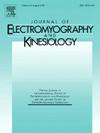Episiotomy and innervation zones of the external anal Sphincter: A case series investigating the impact on neurological patterns
IF 2.3
4区 医学
Q3 NEUROSCIENCES
引用次数: 0
Abstract
Objective
To investigate the impact of mediolateral episiotomy on the innervation zones of the External Anal Sphincter (EAS) in the absence and presence of direct muscular injury.
Methods
This case series examined four primiparous women, including three who underwent vaginal deliveries with mediolateral episiotomy and one cesarean section case for reference. Pre- and post-delivery assessments utilized surface electromyography (sEMG) and endoanal ultrasound to evaluate changes in the EAS’s innervation zones and obstetrical EAS injuries, alongside the Wexner score for fecal incontinence.
Results
Mediolateral episiotomy can alter the innervation pattern of the EAS, with a significant reduction in innervation zones observed in the episiotomy cases compared to the reference cesarean section case. This alteration was evident even in the absence of visible EAS injury, suggesting episiotomy’s potential to disrupt EAS functionality. Notably, the Wexner score indicated varying degrees of fecal incontinence among the episiotomy cases.
Conclusion
Mediolateral episiotomy may impact the EAS’s innervation pattern, highlighting the importance of considering individual innervation zones in episiotomy planning. While the integration of sEMG into routine clinical practice is still evolving, this study underscores its potential as an additional tool for assessing neural integrity, particularly in cases of anal sphincter injury and reconstruction. Future research should explore the dynamics of re-innervation and the correlation between vascular injury and reduced innervation zones to enhance patient-specific care in pelvic floor dysfunction.
会阴切开术和外肛门括约肌的神经支配区:一个研究对神经模式影响的病例系列。
目的:探讨外阴中外侧切开术对肛门外括约肌(EAS)神经支配区的影响。方法:本病例系列分析了4例初产妇女,其中3例阴道分娩伴会阴中外侧切开,1例剖宫产,以供参考。产前和产后评估利用表面肌电图(sEMG)和肛管超声来评估EAS的神经支配区变化和产科EAS损伤,以及Wexner评分来评估大便失禁。结果:外阴中外侧切开术可改变EAS的神经支配模式,与参考剖宫产手术相比,外阴切开术患者的神经支配区明显减少。即使没有可见的EAS损伤,这种改变也很明显,这表明会阴切开术可能会破坏EAS功能。值得注意的是,Wexner评分显示会阴切开术患者存在不同程度的大便失禁。结论:外阴中外侧切开术可能影响外阴神经支配模式,强调在外阴切开术计划中考虑单个神经支配区域的重要性。虽然将肌电图纳入常规临床实践仍在不断发展,但本研究强调了其作为评估神经完整性的额外工具的潜力,特别是在肛门括约肌损伤和重建的情况下。未来的研究应探索再神经支配的动力学以及血管损伤与神经支配区减少的相关性,以加强盆底功能障碍的患者特异性护理。
本文章由计算机程序翻译,如有差异,请以英文原文为准。
求助全文
约1分钟内获得全文
求助全文
来源期刊
CiteScore
4.70
自引率
8.00%
发文量
70
审稿时长
74 days
期刊介绍:
Journal of Electromyography & Kinesiology is the primary source for outstanding original articles on the study of human movement from muscle contraction via its motor units and sensory system to integrated motion through mechanical and electrical detection techniques.
As the official publication of the International Society of Electrophysiology and Kinesiology, the journal is dedicated to publishing the best work in all areas of electromyography and kinesiology, including: control of movement, muscle fatigue, muscle and nerve properties, joint biomechanics and electrical stimulation. Applications in rehabilitation, sports & exercise, motion analysis, ergonomics, alternative & complimentary medicine, measures of human performance and technical articles on electromyographic signal processing are welcome.

 求助内容:
求助内容: 应助结果提醒方式:
应助结果提醒方式:


